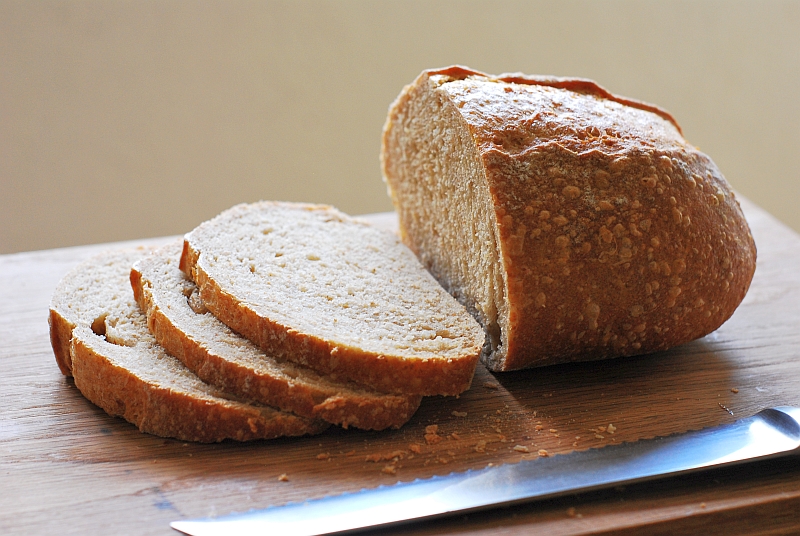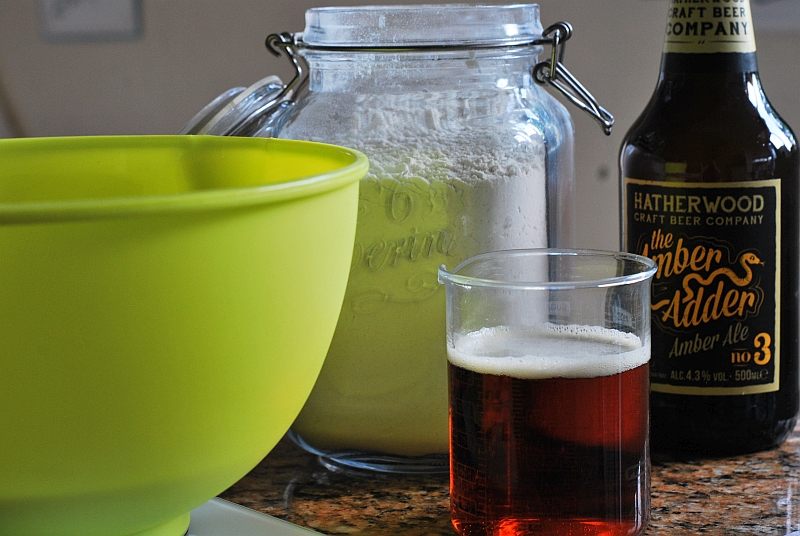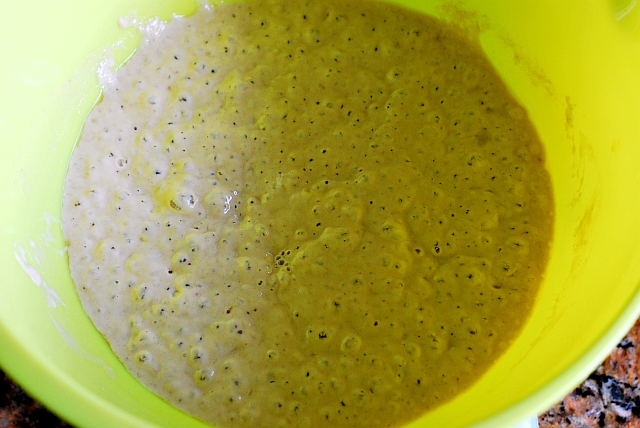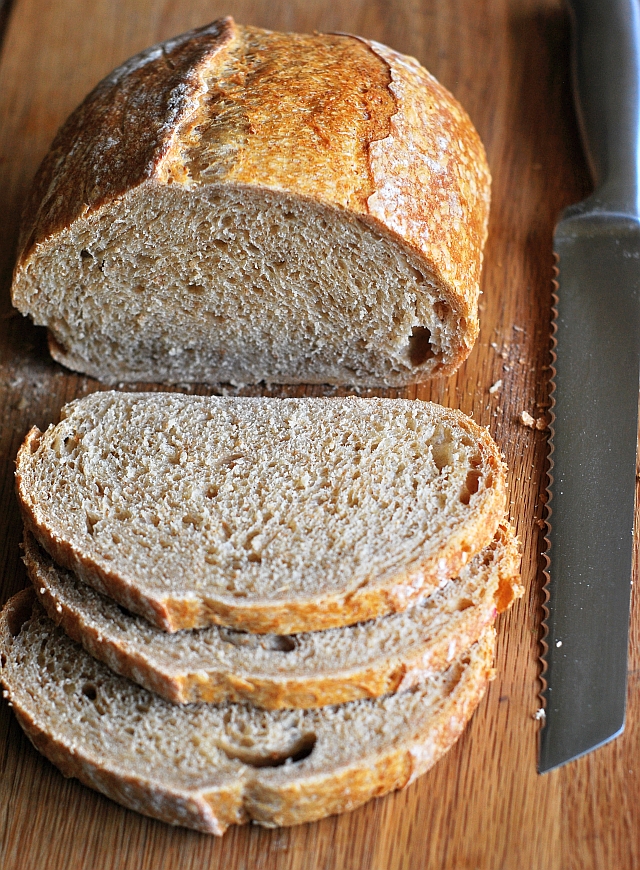
Bread with a poolish ferment
- Some people love chocolate, other have cheese fetish. There are even marmite lovers (don’t know why so don’t ask me)! I simply couldn’t live without bread. Don’t judge me. I know it is not a trendy fit food. I do not belong to the low carb, ramen, paleo club. I don’t care. I absolutely adore the stuff. For me there is nothing better than a bite of a freshly baked baguette or a slice of bread drizzled with olive oil and then grilled or bread and butter pudding. I can go like that for ages. You may have noticed that I prefer to bake sourdough breads as in this recipe for ciabatta or Mediterranean bread. I find sourdough flavour superior to breads baked with bakers yeast. It is also much healthier. However I understand that for many people the prospect of sourdough baking may feel a bit daunting. Fear no more, there is compromise available. It is called “poolish”. It is a method where you use bakers yeast but it is used to create a form of ferment starter that you then use to build your bred. Whilst it is not identical to sourdough it is the next best thing and gets you to that unique flavour as close as possible. One of the legends states that this method has been brought to France by Polish bakers in XIX century. No evidence exists to support this theory but as I am Polish myself I like this story. You will find this method much simpler and quicker than sourdough. You don’t need to go through a process of growing sourdough starter. I like using pale ale when I make bread with a poolish ferment. It adds to the flavour complexity and I think it helps with the fermentation. However you can replace if with water if you prefer to drink the beer with the bread rather than in it.

Makes one loaf.
Equipment required:
- Pair of hands
- 800g benettone (proving basket) or colander lined with tea towel
- Baking stone. If you haven’t got one a heavy baking tray would do. Just place it upside down so that it is flat
- Bread (pizza) peel. This is used to transfer proved bread into the oven. If you don’t have the peel use flat edged baking tray or if you only have one with a lip, turn it upside down.
- Large mixing bowl, preferably with a lid.
- Razor blade also known as lame. You will use this for slashing the tops of loaves. You can get away with a sharp knife but I switched to lame as it does the job more cleanly
- Precision kitchen weighing scales

Ingredients:
- 400g strong white flour
- 50g strong wholemeal flour
- 300g good quality ale (or water)
- 3g (1/2 tsp) dried active yeast
- 8g sea salt
Method:
- In a large mixing bowl mix 100g white flour and yeast together. Add 100g ale and mix all the ingredients until combined and you have a very wet dough. Cover the bowl with a lid (or shower cap) and leave in a warm place for 8 – 10 hours until the mixture has risen and there are lot of bubbles on the surface. This is your poolish ferment.

- Add the remaining ale to the bowl and mix well until the poolish is thoroughly diluted.
- Add the remaining flours and mix until all ingredients combine and you have a rough dough. Cover the bowl. Open another bottle of beer, pour yourself a glass and go to relax in the garden. This process is called autolyse. You will find that after a period of time the dough will be much easier to knead and it will become much more stretchy. You can leave the dough to autolyse for 30 – 60 minutes.
- Add the salt. The dough is now ready to knead.
- Lift a portion of the dough up from the side and fold into the middle. Press with your knuckles.
- Turn the bowl 90 degrees and lift another portion of the dough from the side and fold in the middle and press with your knuckles.
- Repeat steps 8 and 9 another 8 times. Cover the bowl and leave to rest for another 10 minutes.
- Turn the dough over and repeat steps 8 – 10 another 2 times. The dough should be smooth and should come away from the bowl sides easily. Do not add any additional flour throughout this process.
- Cover the bowl and let it rest in a warm place for about 1 hour. Transfer the bowl to the fridge and let it rest for another 20 – 24 hours.
- By now the dough has risen and fermented and is ready to be proven. Dust the proving basked (or lined colander) heavily with flour. Lightly dust the work surface with flour. With help of the scraper remove the dough from the bowl and place it on our working surface.
- Flatten the dough gently with your hands. Fold the dough few times to make an oblong or round shape (depending on your proving tool) and leave to rest for about 10 minutes. If you unsure how to shape a loaf please follow instructions here.
- Cover the basket with a tea towel or shower cap. Transfer your proving baskets (colanders) to the fridge (or garage) and leave to prove for another 8 – 12 hours.
- Preheat the over to 250 centigrade. Place a roasting tin on a bottom of the oven and baking stone or upside down baking tray in the middle of the oven. Put a kettle on.
- Dust the top of the proven dough with flour (or even better semolina). so it does not stick to the peel (or baking tray) and you can slide it easily onto the baking stone. Holding bottom of the colander with one hand place your peel (or baking tray) on top of it holding with your other hand. In one rapid movement turn the colander with the peel upside down. Gently remove the colander and then tea towel. You should have your proven loaf on the peel.
- Pour about cup of hot water into the roasting tin on the bottom of the oven. This will create steam that will help your bread to expand and develop a nice crust.
- Make deep slashes on top of your loaf with pattern of your choice. Slide the loaf onto preheated baking stone (or upturned baking sheet). Reduce the temperature to 220 centigrade and bake for about 35 minutes until golden.
- Take it out and tap the bottom. It should sound hollow. Let it cool on a wire rack.
